Gobindpur: The Number One Official Birds Village of India
Gobindpur is a village in Odisha, recognized as India’s first “Birds Village,” located near the Hirakud Reservoir and Debrigarh Wildlife Sanctuary in the Bargarh district. This village has been given the moniker “India’s First Birds Village” because of its residents’ collective efforts to protect migratory birds, which visit the area each year in large numbers for breeding , favourable climate, availability of ample food etc. The initiative involves keeping the village pollution-free and has been undertaken with the guidance of the Hirakud wildlife division.
Strategic Locational Advantage of Gobindpur
Chilika is generally called the paradise of birds especially because Chilika receives a large number of foreign birds particularly during winter. You may like to go through the following article which speaks a volume about the tourism potential of Mangalajodi , which is considered as a paradise for both birds and birdlovers as well.
But apart from Chilika, there is another place in Odisha, where birds can feel completely safe and get plenty of foods as well. Gobindpur is the first official village which has been given the moniker “India’s First Birds Village”. Gobindpur is a small village under Bungapali panchayat of Ambabhana block of Bargarh district. The village is surrounded by dense mountain forests along with the Mahanadi reservoir. This village is full of natural beauty as it falls under the Lakhanpur Wildlife Range. This village has been made pollution-free for millions of birds. Ramgarh hill is in the east of the village , Garjan hill in the south and the Hirakud reservoir is located on the north-west of Gobindpur. The soil of this area is very fertile because of it’s strategic location on the banks of the Mahanadi River. Various types of vegetables are grown here. Before entering the village, one will first see the the temple of the presiding deity “Garjanpat”. Almost every housewall in the village ” Gobindpur ” has pictures of various birds from India and abroad, including pictures and names of some wild animals. The main objective behind this wall paintings is to bring awareness about the necessity of bird protection in the minds of the guests coming to the village as well as the villagers. Every morning and evening, one can hear the chirping of various species of birds. The sweet call of the peacocks in the nearby forest is captivating. More than any other day of the year, especially during the winter season, visiting birds from Siberia, Mangolia, Central Asia, Russia, China, Caspian Sea, etc., migrate in large numbers to settle in the forests adjacent to the Mahanadi reservoir. Due to its favorable environment, conducive atmosphere and climate, availability of plenty of foods, safety ensured by the local people, consistency of birds arrival in large numbers , this area has been declared as a Ramsar site for watching exotic birds.
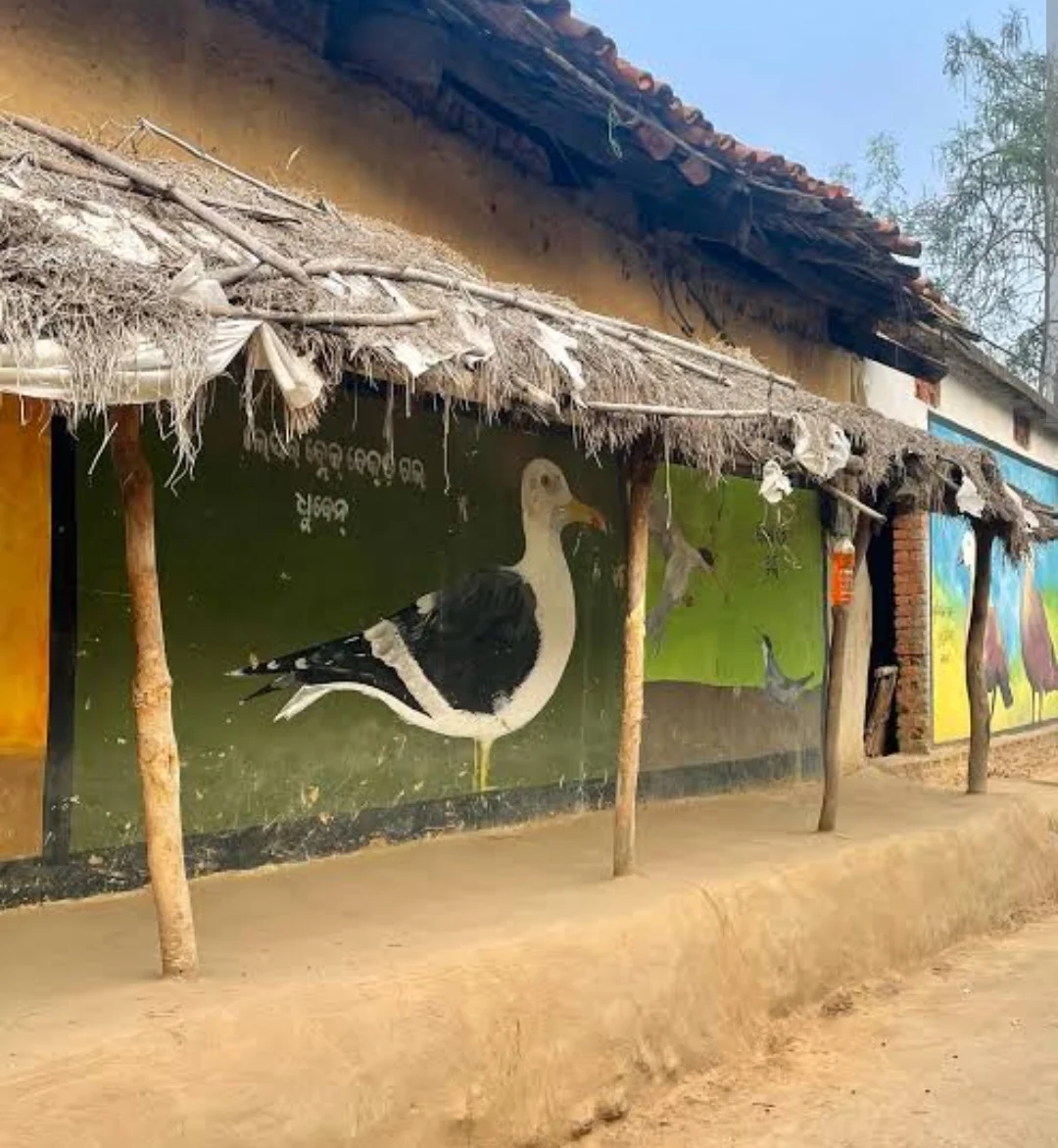
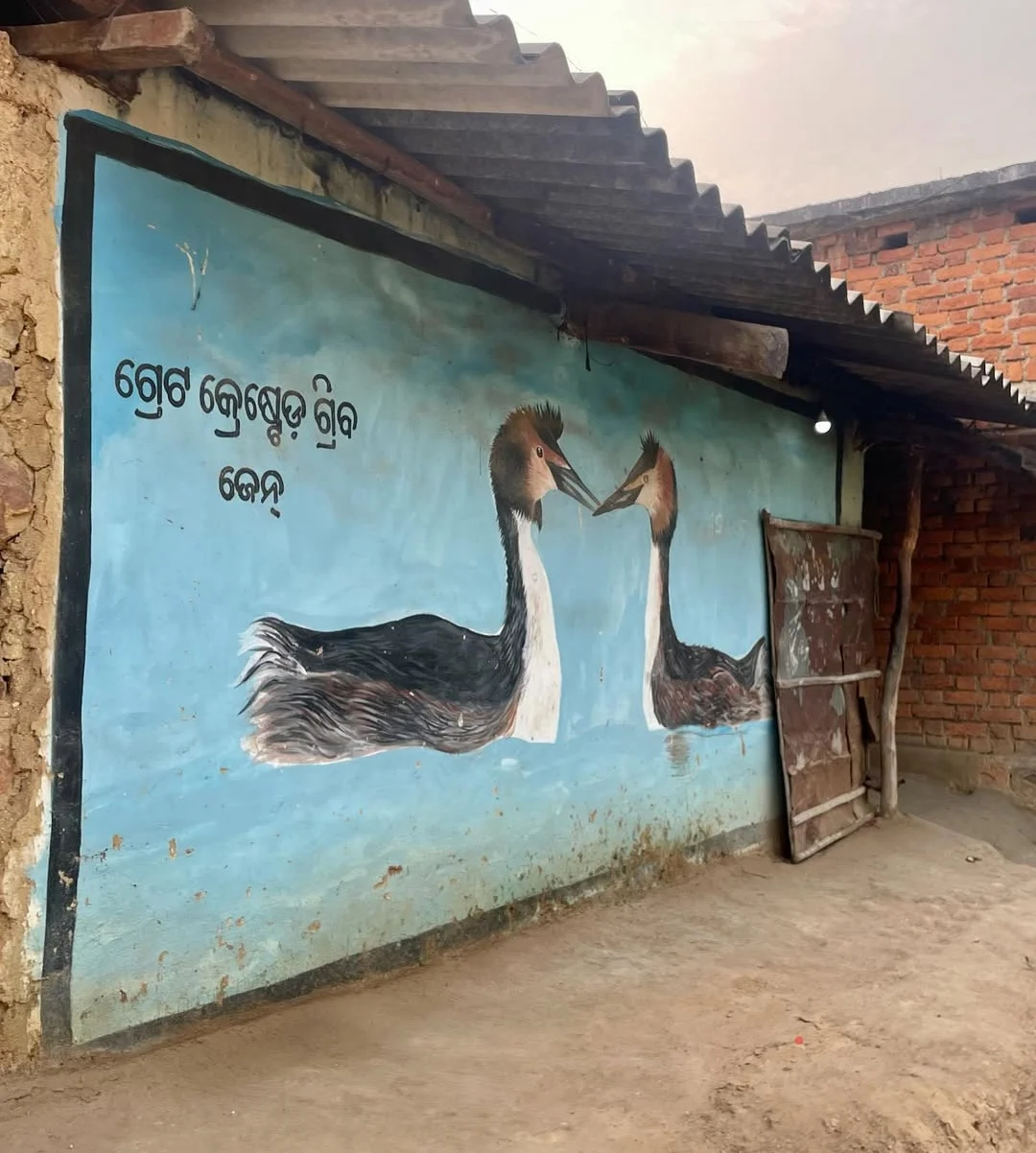
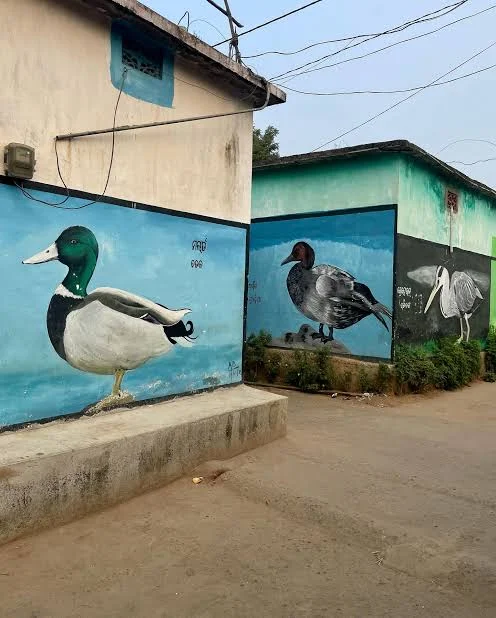
The village Gobindpur can be described in a nutshell under four different broad heads.
- Location: Gobindpur is situated on the banks of the Mahanadi River, bordering the Debrigarh Wildlife Sanctuary on the Odisha-Chhattisgarh border.
- Purpose: The declaration was a community-driven effort to protect migratory birds that flock to the Hirakud Reservoir, which hosts around 125 species, including ducks and pochards.
- Activities: The village is becoming an eco-tourism destination. Visitors can enjoy activities like bird watching, boating, jungle safaris, and nature camps.
- Conservation efforts: Residents have committed to keeping the area pollution-free, and the wildlife division has supported this by painting the houses with bird images and distributing educational materials. Inhabitants of another two adjoining villages called Ramkhol and Tamdei have also joined the conversation efforts.
Emergence of the village Gobindpur
The village was completely submerged in the Hirakud reservoir during the inception days of the Hirakud dam in the year 1956. Many original inhabitants of the village fled to different places, losing all their belongings . Only a few families did not want to leave their native ancestral soil . The memory of the village was revived by the struggle for survival on a higher ground about half a kilometer away from the village.They were fishing in the Hirakud reservoir all day and earning their livelihood. They were raising their family out of the scanty earnings by selling their fishing resources in the local market.

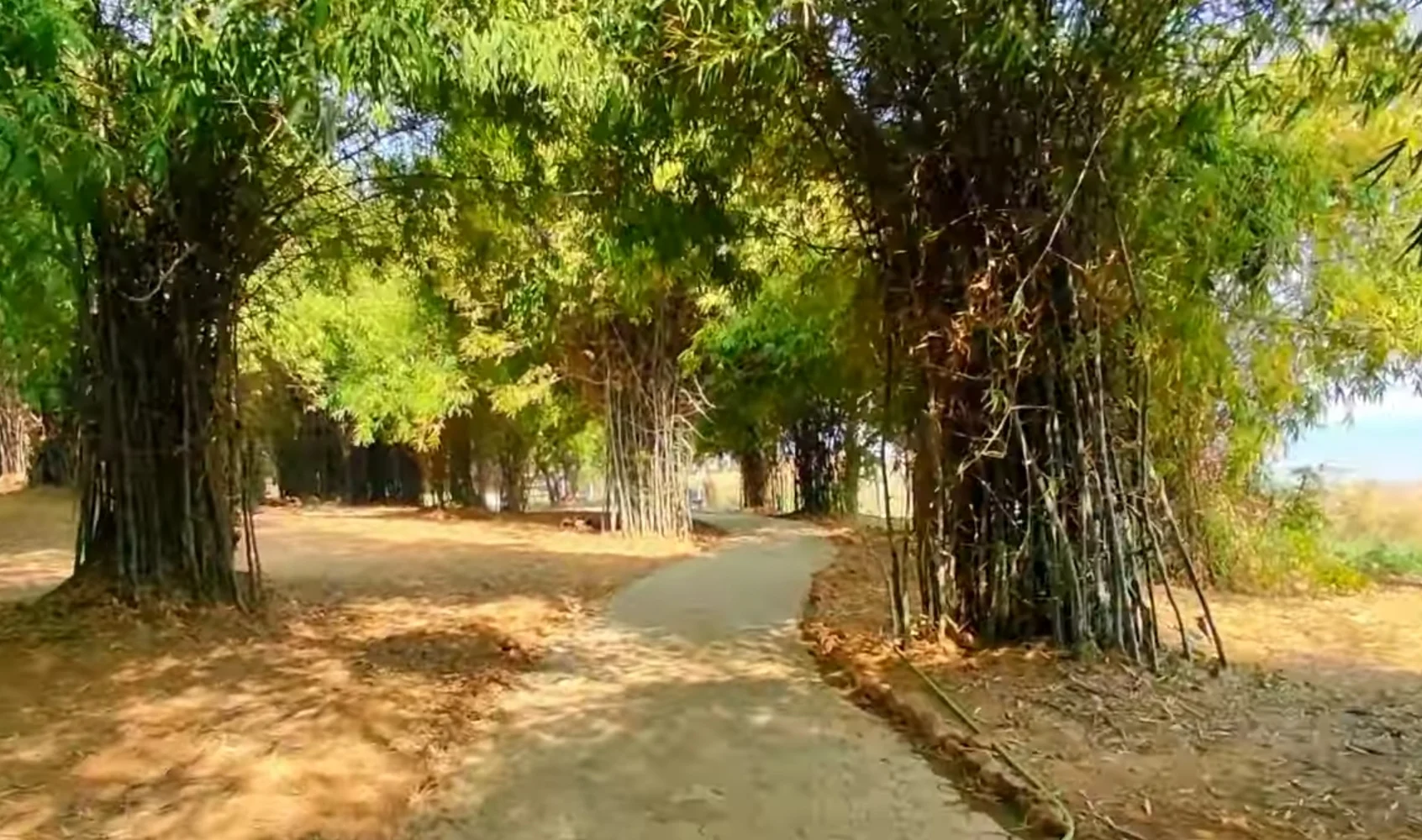
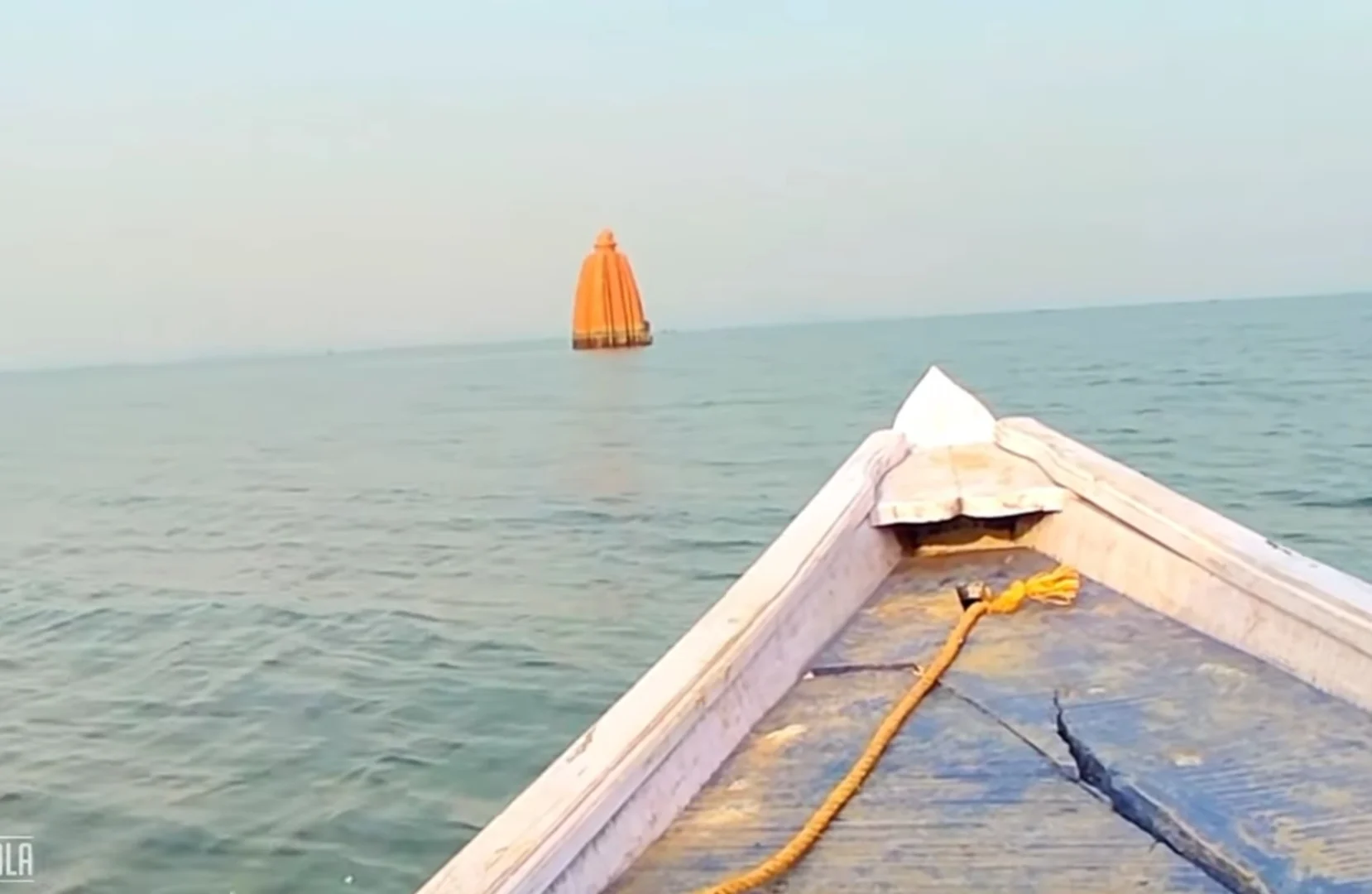
Now there are about 60 families in the village with a total population of 400, all of them are fishermen. While they were fishing in the reservoir, a handful of bird hunters from the surrounding area were hunting birds at different times. The villagers thought of stopping this bird hunting.
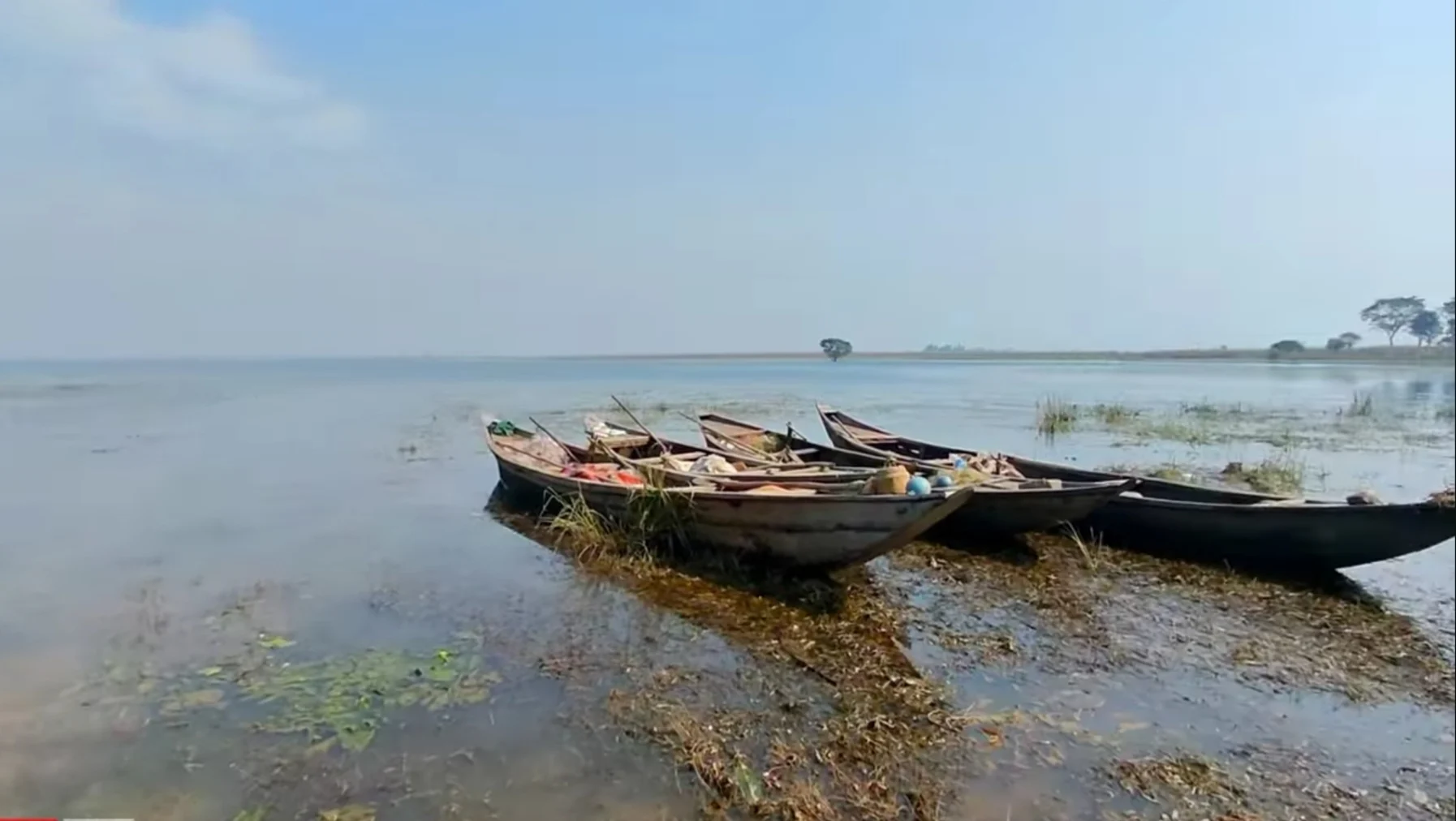
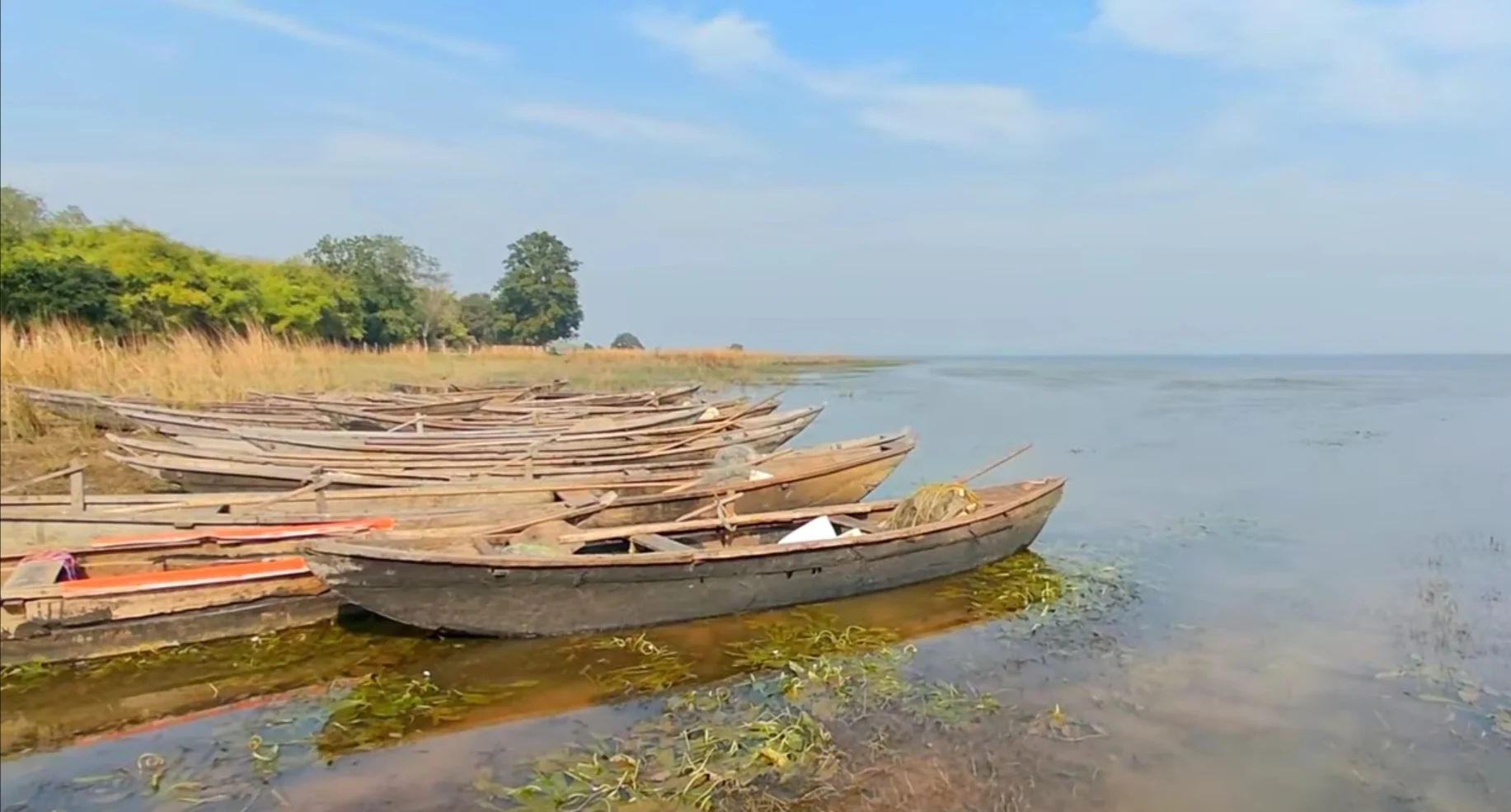
Steps For Bird Protection Exemplified
In order to stop bird hunting in this area, the high-level officials of the local forest department had successfully conducted many awareness campaigns in 2020 by taking the villagers into confidence. A meeting was held in the village on behalf of the villagers for the protection of birds. Due to the conduct of frequent sensitisation and public awareness campaigns for bird protection, no one from the surrounding villages dared to hunt birds in this area anymore. A committee was formed in the village for the purpose of rural tourism development and forest protection where every family of the village joined as a member. On the contrary, due to the popularity of bird protection in the surrounding villages, they also became determined for bird protection. Hirakud Wildlife Division has arranged patrolling in boats during the day and night for bird protection. Here, while forest officials are guarding, members of the Bird Protection Committee cooperate.
Buddhadeb Patra, editor of the Pakshi Suraksha Samiti, says, “After being granted Pakshigram status, all the villagers are helping in every possible way to attract tourists by keeping the rural environment clean and tidy. This small village ‘Gobindpur ‘ is raising awareness towards the protection of nature. Along with bird protection, various plans are being executed for the construction of tourist attractions and employment of the local people. After this village was granted Pakshigram status in 2023, this illfamous village is now known as the “village of bird lovers.”
The ‘Gobindpur‘ villagers do not hunt birds or let anyone do it. A committee has been formed with the villagers to give importance to eco-tourism in the village. The Forest Department has built a beautiful canteen for tourism development in 2023. A park has been built for the daytrippers and excursionists which is located in a beautiful bamboo forest adjoining the reservoir . Here, water is supplied through taps and the villagers earn some income by providing dry wood from the adjoining forest to cook / bonfire. Due to the heavy crowd of forest lovers and bird lovers during the winter season, the Rural Eco Committee has increased the entry fee to Rs. 5 per head, Rs. 50 per head for tourists to travel in boats within the reservoir, and Rs. 50 for parking four-wheelers. Around 125 species of birds arrive in the area from October onwards. According to the information of the Wildlife Division, more than 4 lakh birds have been seen in this reservoir.
Conclusion
The life of the people of this area revolves around the Mahanadi. Evening alati is performed by the villagers on the Ekadashi Tithi of every month. This tradition has been going on since 2023. Similarly, a fair is held here with great enthusiasm on the full moon day of the Kartik month. A large number of devotees gather on this occasion. They celebrate many festivals together, including Kirtan, Bhagavat recitation, Nagbacha Puja, and the widely known harvest festival Nuakhai. What I feel is that community participation is the intense need of the hour for tourism development of any place in a sustainable manner and that has been greatly exemplified by the villagers of Gobindpur.
Dr Manoj Mishra , lunamishra03@yahoo.com
